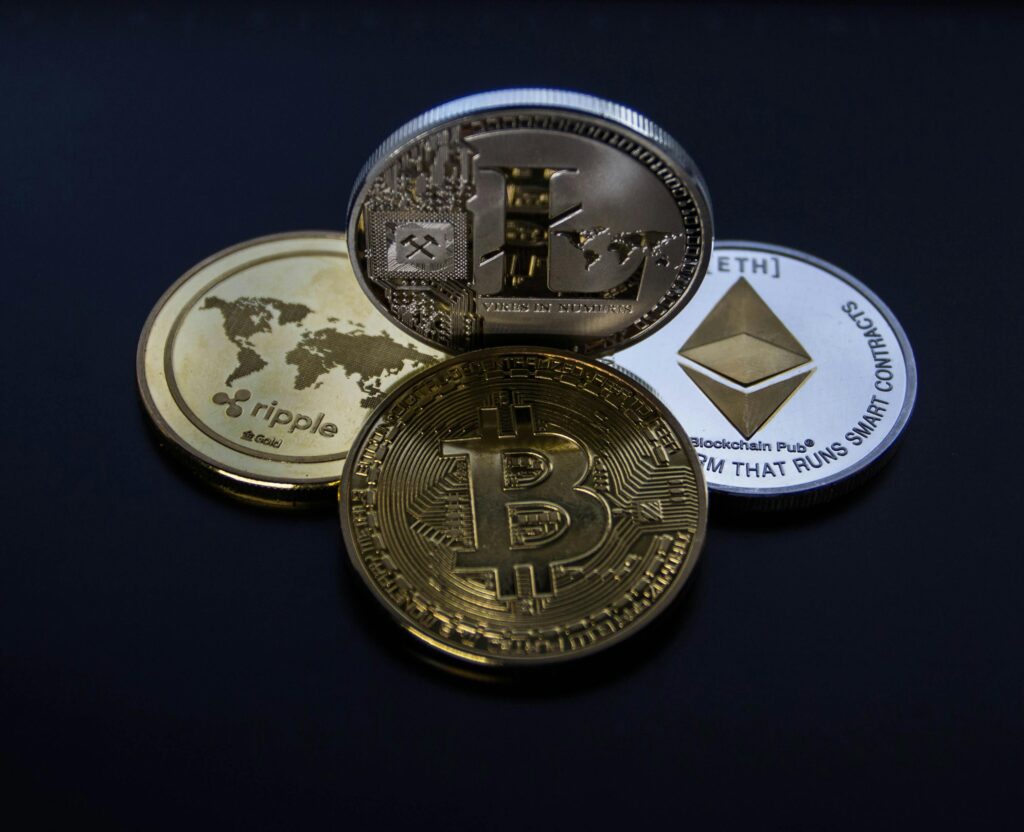As revolutionary technology questions established banking, cryptocurrencies inspire both hope and worry. Although they present a picture of distributed power, digital currencies cause confusion and concern. Five typical misunderstandings concerning cryptocurrencies are investigated in this paper, therefore dispelling false beliefs and clarifying concepts. It reveals the reality behind creative blockchain applications, the changing dynamics of digital assets in the present economic scene, and turbulent markets.
1. Cryptocurrency is Primarily Used for Illicit Activities
Many believe that digital currencies are mostly used for criminal activity and money laundering. However, this perspective ignores the several valid applications that support their acceptance. In fact, cryptocurrencies enable millions of people worldwide to achieve financial inclusion, fuel innovative business ventures, and facilitate daily transactions, often through automated trading bots and other cutting-edge technologies. As regulatory systems and improved security policies change to meet issues, they also help to encourage responsibility and openness. Evidence shows that only a tiny portion of total Bitcoin transactions are illegal, therefore refuting the idea that these digital tools are intrinsically evil. More general acceptance by established financial institutions confirms their transforming power in contemporary business.
2. Cryptocurrency Lacks Real-World Value and Stability
Critics of digital currencies contend that they lack inherent value and show great volatility; nonetheless, these arguments overlook their increasing incorporation into popular financial institutions. As institutional investors include cryptocurrency in diverse portfolios, markets show growing consistency. Blockchain technology’s developments offer clear, open venues for transactions, therefore strengthening economic confidence. Steady development in market capitalization and practical uses like remittances and smart contracts is shown by empirical data. A developing network of services, goods, and controlled exchanges promotes a dynamic financial environment that challenges conventional wisdom and reveals digital currencies as viable assets with changing value propositions that improve economic variety. While rising acceptance in business and investment indicates a change towards an acknowledgment of cryptocurrencies as useful tools for economic transactions, ongoing research, and legislative changes help to stabilize the market.
3. Cryptocurrency Transactions Are Irreversible and Risk-Free
Many people believe that once digital transactions take place, they become unchangeable and naturally safe, therefore removing any means of mistake control. Blockchain technology guarantees openness, but it also brings hazards related to permanent transfers and possible human errors. Technical flaws, hacking, and fraud still worry us, and we need strong security methods and meticulous transaction validation. As markets and technology change, better protections and conflict resolution systems are developed. Though the absence of centralized control calls for more awareness and thorough education about safe digital activities, continuous developments in encryption and digital identity management are progressively reducing these threats. Recent projects by blockchain developers and cybersecurity professionals seek to inform consumers and apply multi-layered security systems, thereby lowering vulnerabilities and building dependability and confidence in the developing digital financial environment.
4. Cryptocurrency Operates Without Any Government Oversight
Many people think that digital currencies create an environment of lawlessness and unbridled financial activity by being totally outside of legal systems. Governments, however, are realizing cryptocurrencies and passing rules controlling their use, taxes, and compliance requirements. To guarantee financial integrity, regulating authorities track transactions and implement anti-money laundering rules. Digital assets are becoming more accessible and safer for investors and regular transactions as regulatory clarity gets better. Rising collaboration between governments and business players shows a dedication to strike a balance between innovation and consumer safety, hence erasing the idea of an uncontrolled digital currency frontier. Reflecting a trend toward thorough control that improves market stability and promotes responsible innovation across worldwide financial systems in tandem, recent policy initiatives, cross-border regulatory discussions, and cooperative frameworks continue to shape the digital currency scene.
5. Cryptocurrency is a Get-Rich-Quick Scheme
According to a prevalent belief, digital currencies are quick routes to rapid riches and draw in investors with promises of low work required. Reality shows a more complex picture in which long-term strategic planning, market cycles, and risk are rather important. Both speculative trading and volatile price fluctuations call for rigorous study and wise decision-making. Navigating the digital asset terrain requires sound investing habits, diverse portfolios, and reasonable expectations. Emphasizing slow progress over speculative excitement, sustainable development depends on thorough study, technical innovations, and changing market dynamics challenging oversimplified ideas of immediate wealth. Detailed market studies and seasoned investor experiences highlight the need for patience, careful study, and strategic thinking in creating wealth gradually rather than following ephemeral trends that promise fast rewards without a strong basis. Still very important are market discipline and ongoing education.
Conclusion
To sum up, widespread misunderstandings about cryptocurrencies hide the real possibilities and difficulties of digital banking. Misunderstandings of illegal usage, value stability, transaction hazards, regulatory control, and fast riches divert attention from the creative transformation redefining contemporary economies. Understanding these misconceptions helps one to see the transforming potential of blockchain technology and the responsible development of digital assets with great hope.
- 5 Common Misconceptions Regarding Cryptocurrency - March 28, 2025
- How CMMS Software Can Help Your Business - November 23, 2022
- 6 Reasons Every Business Should Stay Up to Date with Technology - September 13, 2022



